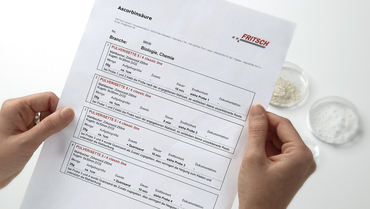Back to overview
Biofuel - Engergy supplier of the future?
However, in the past months and years biofuels had the reputation to generate a social- und environmental dilemma. For example, in developing countries large areas were cleared and used for sugar cane biofuel monocultures or similar and therefore were at the same time unintentionally in competition with the production of food.
A well-known problem
Inevitably, lead this well-known problem to the development of more climate friendly and socially acceptable uses of second generation bio fuels. So for first generations bio fuels solely sugar respectively the oily contents of the infructescence of a plant were used. In contrast, with second generation bio fuels only the cellulose, respectively hemicellulose containing parts of the plant; mostly the stem axes or leaves of the plant were used. This type of utilization has three decisive advantages: For one the fuel is not in competition with food or animal feed production, since the infructescence like for example a kernel of corn, can still be used for the production of food, second the part of plants containing cellulose are considered the energy richer parts. As a third aspect the production costs have to be considered. The plant parts containing only cellulose respectively hemicellulose are clearly much more reasonable available from the raw materials market than those with a high degree of nutrients like for example mono or disaccharides, proteins or lipids.
Bio fuels of the second generation are additionally more climate friendly than fuels of fossil energy sources like crude oil or natural gas, because during its growth, the plant draws from the atmosphere exactly the amount of the climate gas carbon dioxide, which is later released during the combustion in engines.
Production of bioethanol
Bio ethanol is produced and obtained via biocatalysis (fermentation) and bio process technology. In order to run such well-engineered bio process technology plants, as a rule, a preparation of the lignocellulose containing residual material is required. Not only the degree of the comminution (particle size) due to the installed technical components of the plant, like valves and the built-in measurement instrumentation and control systems play a part, but rather what seems even more important is the produced by the comminution high surface and the associated residence time and fermentation period in the bio-fermenter. Hereby the used micro organisms and enzymes are given the opportunity in a time- and resource saving approach to achieve the highest possible plant effectiveness.
Effective comminution of raw materials
For the comminution of the residual plant matter in many pilot plant stations and pilot installations FRITSCH Cutting Mills are utilized. Here especially the Universal Cutting Mill PULVERISETTE 19 in combination with the sample exhauster the cyclone separator. Advantages of this system are: easiest handling during cleaning and the exchange of the cutting tools.
The importance of the final fineness
Extremely decisive though for the production of bio ethanol is the achievable final fineness. Here due to the utilized patented FRITSCH sample exhaustion, it is possible to produce sufficiently large amounts of bio mass with a particle size distribution from up to smaller than 250 µm, which then can be transferred to the fermentation plants without any problems. The attainment of the required final finenesses depends mainly on the type of commodities, as well as the regulating factors of the machines (sieve inserts / comminution principle). So inevitably the available sieve passage surface with the used 100 µm sieves are multiply reduced in comparison with the standard sieves, resulting in a high degree of physical strain on the sample material. This physical strain usually becomes noticeable through the generation of heat in the instrument, as well as a reduced throughput.
Occupational safety thanks to the use of highly efficient vacuuming and particle separation via a high-performance Cyclone separator
All these problems can be avoided due to the directed high volume flow of the exhaust system adapted to the Cyclone with 3840 l/min and 259 mbar negative pressure. The use of two polyester filter cassettes ensures a constant high vacuum performance according to dust protection class M. This is additionally supported by the permanent automatic, electromagnetic pulse cleaning at the filter during continuous vacuum operation.
-
Download the FRITSCH-report as PDF file
-
Detailed grinding reports
Back to overview








